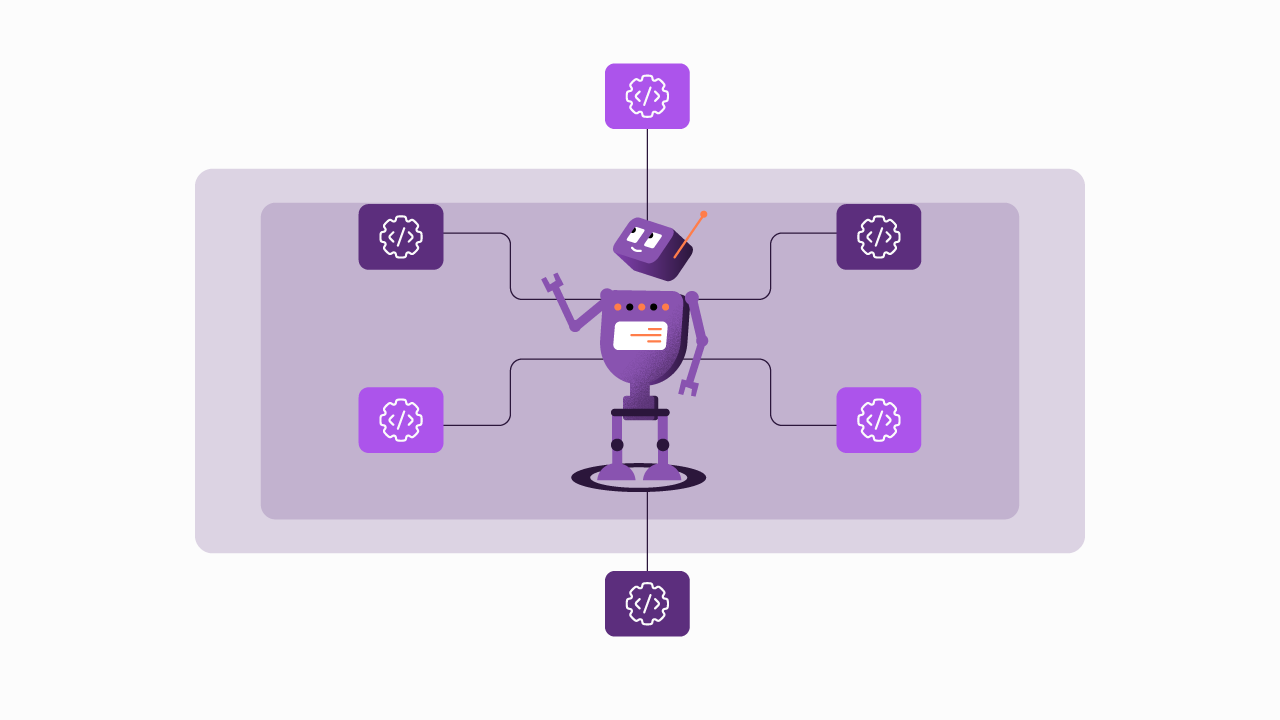Ignite Your PaaS Strategy
Platform-as-a-Service (PaaS)
The business landscape as a whole has undergone a significant transformation. Where once companies primarily competed on the strength of their individual products or services, now the strategic focus has shifted toward a more holistic approach. This shift is embodied by the rising adoption of the Platform-as-a-Service (PaaS) strategy, a trend that has redefined the rules of competition and unlocked new opportunities across various sectors. PaaS is not merely a technological shift, but a paradigm that revolutionizes the way businesses operate and interact within their ecosystem.
Platform-as-a-service is about tapping into the power of the collective, underscoring the value of the broader business ecosystem composed of customers, partners, suppliers, and regulators. By adopting a platform-based mindset, companies are essentially reorienting their strategic focus from a purely product-centric view to a more integrated one. This shift allows for the orchestration of resources, fostering of collaboration, and promotion of co-creation among stakeholders. Instead of solely concentrating on individual offerings, companies adopting this approach are leveraging their entire ecosystem to drive innovation and deliver superior products and services. This collective and collaborative approach not only propels the company's growth but also creates a virtuous cycle of success for its partners and suppliers, resulting in a thriving, interconnected business ecosystem. Here are some of the concepts covering platformization.
Business Ecosystem
This is the network of stakeholder (people, companies, applications, and devices) where there is an exchange of information, products, services, and currencies.
Digital Platform
This is the technology foundation that allows partners or customers to share data and processes, combine services, expand reach, and tap into new business models.
Platform-Based (PaaS) Business Model
A business model that fosters seamless connections between suppliers and customers, facilitating the creation of goods and services within an ecosystem so that all participants can capture maximum value from their interactions.
Platformization or Platform Thinking
Signifies a significant shift in your business strategy focus to:
- Allocate resources for a broader strategy
- Move from internal focus to external engagement
- See the value of your ecosystem as a whole
Over the past decade platformization has surged, driven by the widespread expansion of broadband connectivity. This has facilitated seamless connections between different business stakeholders, while the rise of the Internet of Things (IoT) has simultaneously enabled the construction of intricate ecosystems involving people, things, and companies. Through the power of advanced analytics, businesses can now process enormous amounts of data and uncover valuable insights from this complex web of interactions.
The Power of Active-Monitoring
Businesses have a new found ability to actively monitor events, identify patterns, gain valuable insights, orchestrate resources, and trigger coordinated actions among ecosystem participants. This ability has empowered companies to build more platforms, and effortlessly connect with partners and customers, enabling secure data sharing, co-creation of products, and seamless service integration.
This dynamic environment set the stage for innovation, unlocking new business opportunities, increasing customer participation, and driving maximum profits and business scalability through a domino effect in these ecosystems.
“The new competition is no longer between independent companies, but rather between complex business ecosystems, which compete with one another to obtain the best customer service and lowest costs”
– Philip Kotler
Supporting this trend, Platform as a Service (PaaS) has emerged as a prominent theme at the renowned Gartner Symposium, a global event that explores the latest technology and strategic advancements. During the symposium, analysts presented a technological framework for platforms and business strategies centered around platforms.
According to Gartner, CIOs are advised to transform their existing IT infrastructure into a flexible, programmatic, event-driven digital platform with a service-based architecture, leveraging microservices. To drive success, companies must prioritize the seamless integration of legacy systems with cutting-edge technologies, enable dynamic offerings, deliver omnichannel experiences, and orchestrate collaborative actions within the ecosystem.
Technological Platform for Digital Business – Gartner image: Takeaways from Gartner Symposium: 5 Focus Areas for Your Digital Business Strategy
API Strategy & PaaS
Gartner analysts have identified four main types of platform-based strategies, which are not mutually exclusive, each with varying degrees of openness (internal, restricted, and public APIs).
- Collaboration platforms – revolutionize integrations and enhance operational collaboration with ecosystem partners in unprecedented ways.
- Orchestration platforms – enable the coordination and integration of shared resources and processes among ecosystem partners.
- Matching platforms – facilitate the connections between requesters and bidders, enabling seamless interactions.
- Creation platforms – empower partners to develop their own apps, products, services, capabilities, and business models on the platform, fostering innovation and customization.
Tech Platforms for Digital Business
They serve as the underlying infrastructure that enables companies to connect and interact with their ecosystem, which includes customers, partners, suppliers, and regulators. In the realm of digital business, tech platforms play a pivotal role in enhancing operational efficiency, driving growth, and fostering resilience. By leveraging these platforms, businesses can tap into a wealth of opportunities, unlocking new avenues for value creation and competitive advantage.
The most common approach to developing and offering platform services is to leverage APIs and service-oriented architectures. This method capitalizes on the advantages of modularity and standardization, leading to reduced complexity, enhanced integration agility, and the opportunity for component reuse.
Modules of Technological Platform for Digital Business – Gartner image: Takeaways from Gartner Symposium: 5 Focus Areas for Your Digital Business Strategy
Empowering Platform-as-a-Service with APIs
APIs are more than just interfaces for the backend – they are key enablers of digital businesses. Through APIs, organizations can seamlessly connect internal services, client applications, analysis systems, cloud technologies, IoT devices, and external ecosystem partners in an agile and scalable manner. APIs also play a crucial role in applying robust governance and security mechanisms.
Technology Platform for Digital Business – Gartner image: Takeaways from Gartner Symposium: 5 Focus Areas for Your Digital Business Strategy
Beyond facilitating integration between internal systems and ecosystem partners, APIs unlock numerous possibilities, including:
- Enabling seamless data exchange and interoperability across new channels and applications, by means of different interfaces and devices (IoT) offering an omnichannel experience to users.
- Empowering organizations to transform data and services into new products, expand existing offers, and monetize APIs-as-Products through new business models, while reducing time to market.
- Developing an event-driven New IT Architecture leveraging microservices and mesh apps to enhance agility, and promote reuse, decoupling, flexibility, and responsiveness.
- Unlocking new innovative business models by synergistically combining resources and strategies, leveraging the power of platformization.
- Adopting emerging technologies like AI as service offerings and seamlessly integrating them with existing legacy systems.
- Fostering innovation through Open API initiatives like hackathons and co-creation projects in collaboration with partners or startups.
API Management Platform
An API Management Platform can serve as the ignition switch for your Platform-as-a-Service (PaaS) strategy. It acts as the gatekeeper, managing and controlling the interfaces that allow applications to communicate and share data within your platform. Knowing your organization’s API Management is vital to enhancing your secure and efficient integration of services, orchestrating data flow, and facilitating seamless interaction between different software components.
A comprehensive API Management platform provides essential tools to efficiently handle and address the complexities of APIs. The Sensedia API Platform simplifies the exposure, consumption, and management of resources and data via APIs, it provides a comprehensive Full Lifecycle API Management solution. This solution is further supported by a dedicated consulting team, ensuring that clients receive expert guidance every step of the way. The Sensedia team partners with clients to devise digital business strategies and design cutting-edge IT architectures. They also implement Microservices and specialize in the development and deployment of APIs. Through these targeted efforts, Sensedia aids businesses in not just navigating their respective industries, but emerging as industry leaders, driving growth and innovation. Sensedia has been featured in both the Gartner Full Lifecycle API-Management Magic Quadrant and the Forrester Wave API Management Solutions.
How to seize opportunities presented by PaaS?
As your digital business grows, it's important to take a step-by-step approach in building your digital business technology platform. Think of it as gradually constructing a puzzle, piece by piece. Central to this process should be developing an agile IT landscape that's primarily built around services and APIs. This approach can act as a bridge, connecting your legacy systems with emerging technologies and ecosystem partners.
Remember, simply having APIs isn't enough. You need to manage them effectively, and that's where an API Management Platform comes in. Look for a platform that comes equipped with governance mechanisms, solid security features, and extensive support for API design and developer collaboration. It's about making your platform not just functional, but secure and efficient too. After all, a well-managed API ecosystem is the secret sauce for a thriving digital business.
The success of a platform-as-a-service strategy hinges on three core factors:
- Connection: how easily others can connect to the platform to share data and services. For example, Apple empowers developers with the underlying operating system and code libraries, YouTube offers creators a robust hosting infrastructure, and Wikipedia provides collaborative tools for writers.
- Gravity: drawing participants, producers, and consumers to the platform and generating traction. Platform builders should pay attention to the design of incentives, reputation systems, and pricing models in their ecosystem.
- Flow: facilitating co-creation and the flow of value among ecosystem participants. The platform's effectiveness is linked to its ability to stimulate seamless value exchange and incremental collaboration.
Three Elements of a Successful Platform Strategy – HBR
Even if building a platform doesn't seem to fit right into your organization's immediate plans, don't underestimate the power of adopting a Platform-as-a-Service (PaaS) strategy. An agile IT environment that can flawlessly blend with ecosystem APIs is a game-changer that can significantly boost your company's competitiveness in the market. So, while a platform strategy might not be on today's agenda, it could be the key to tomorrow's success.
References about Platform-as-a-Service (PaaS)
- Three Elements of a Successful Platform Strategy – HBR
- Pipelines, Platforms, and the New Rules of Strategy – HBR
- Platform business models: 4 key steps for implementation | CIO
- Platform Strategy: Openness, Innovation & Control
- A Digital Business Technology Platform Is Fundamental to Scaling Digital Business – Gartner
- Gartner Events On Demand
- Platform Revolution – Ch 01 Intro: How Platforms are Changing Commerce
Begin your API journey with Sensedia
Hop on our kombi bus and let us guide you on an exciting journey to unleash the full power of APIs and modern integrations.
Related content
Check out the content produced by our team.
Embrace an architecture that is agile, scalable, and integrated
Accelerate the delivery of your digital initiatives through less complex and more efficient APIs, microservices, and Integrations that drive your business forward.





.svg)




.png)

